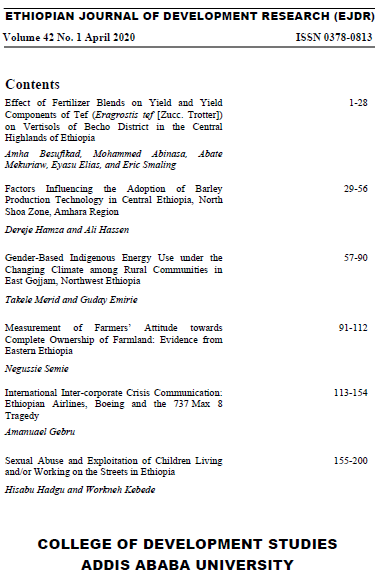Factors Influencing the Adoption of Barley Production Technology in Central Ethiopia, North Shoa Zone, Amhara Region
Keywords:
Barely production, Adoption, Influencing factor, North Shoa, agricultural technologiesAbstract
Barley is one of the most important cereal crops widely produced in the highland
areas of Ethiopia. This study examined factors influencing the adoption of barely
production technology in Ankober, Basona, and Angollela districts, in North Shoa
Zone, Amhara Region. Nine barley producing rural kebeles, three from each study
district, and a total of 812 respondents (604 males and 208 females) were selected
randomly. To triangulate and explain the survey results, three focus group
discussions each with 12 purposively selected participants (thus involving 36
participants in the three districts) were conducted. The data were analysed using
multivariate probit model, descriptive statistics, opinion and concept analyses and
interpretations. The study findings revealed that frequent ploughing, fertilizer and
manure compost were commonly adopted by more than 50%; and herbicide,
frequent weeding, improved barley seed varieties, and farm land drainage practices
were adopted by less than 50% of the farm households. The joint adoption and
rejection probability of all technologies and practices by all farmers were 2% and
5% respectively. Farmers’ decisions of adoption of purchased technologies were
influenced by factors external to farmers, and those are credit, input supply,
extension and farmers’ freedom of choosing technologies and preferences which
need attention by policy- and decision-makers as well as by development
practitioners.
Downloads
Published
How to Cite
Issue
Section
License
Copyright (c) 2022 Dereje Hamza Mussa, Ali Hassen Muhaba

This work is licensed under a Creative Commons Attribution 4.0 International License.


